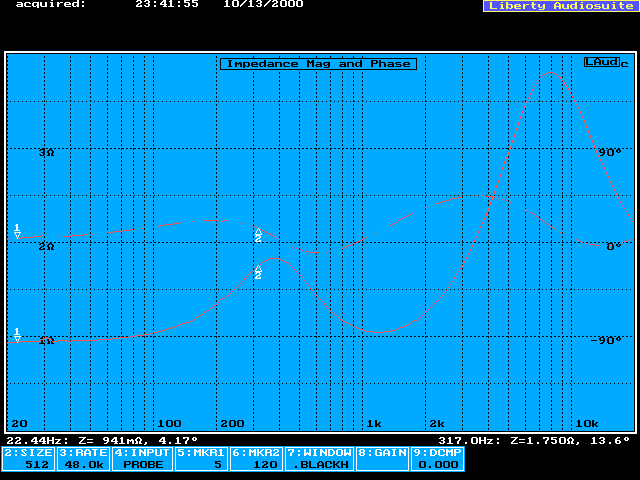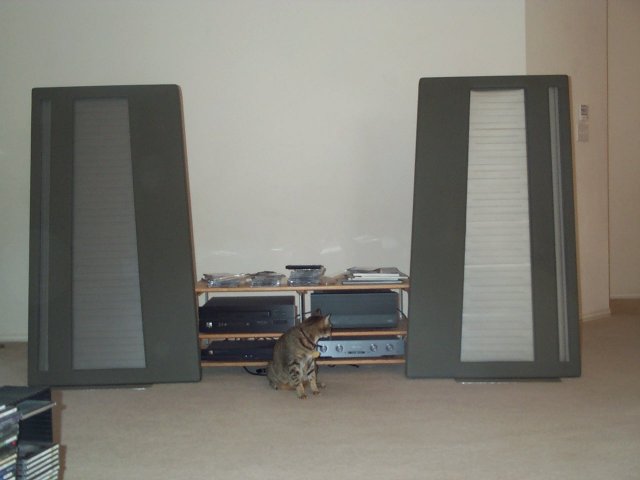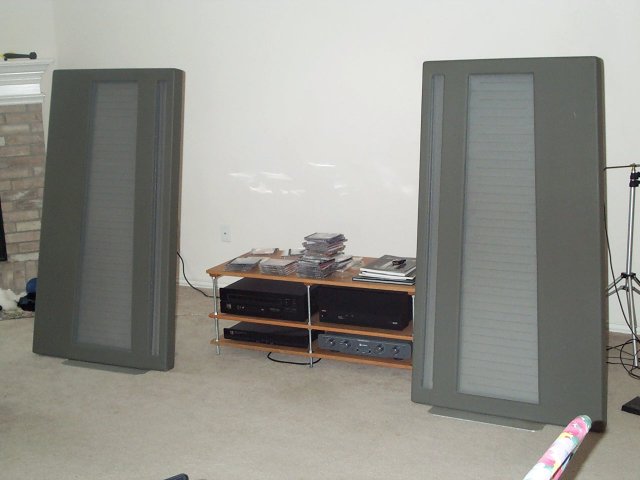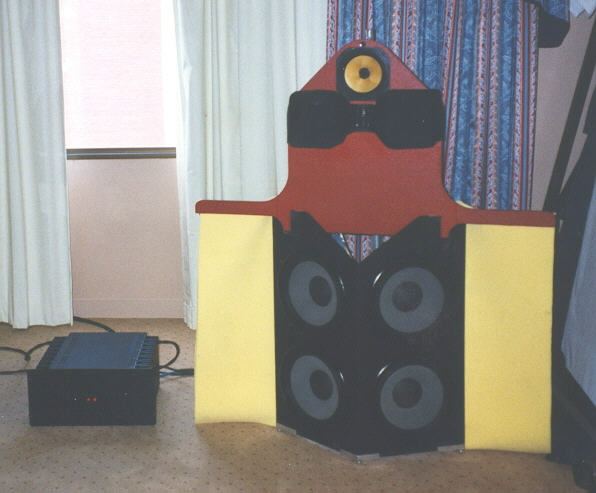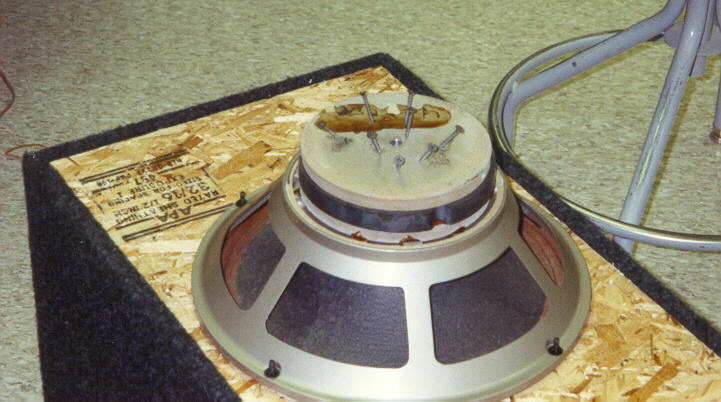This is an Apogee Scintilla, probably made in 1986 or 1987. (Texas size, 18 pound cat named “Chester” added for scale.) The diaphrams are Kapton film with aluminum foil conductors. The tweeters (4 of them, 2 front, 2 rear) and mid-range are suspended between a 2″ wide by 1.5″ deep by 54″ tall magnet gap composed of 2 double rows of magnets. The woofer ribbon diaphram is in front of a perforrated sheet of steel onto which are attached rows of magnets. The magnets alternate polarity so as to provided the same direction of force to the aluminum trace which “snakes” down the Kapton film. All of those magnets make the system very heavy: 140 pounds per speaker!
The system powering them in Oct ’00:
- (Top-Left) This amp-sized item is not an amplifier, but a Theta Digital Data II combination Laser Disc / CD transport (1995 vintage).
- (Bottom-Left) A Theta ProProgeny A DAC to match the transport. Actually, it a bit newer than the transport (1999 vintage). I selected this DAC based on reputation, but also because the output voltage is better than 4 volts for full swing.
- (Bottom-Right) The pre-amp, a McCormack TLC-1 was rated stereophile class A for its pair of unity gain outputs: one passive, and one buffered. No pre-amp gain meant selecting a DAC with higher than normal output voltage.
- (Top-Right) Amplification is via an Adcom 5500 that used to be on subwoofer duty in the home theatre. The Adcom does have some turn-on thump that I don’t like, but IMHO it is the most heavy duty of the regular offerings (the 5802 and HCA-2200 don’t count as regular) of Parasound, Adcom, and Rotel. I had originally tried to get a Parasound HCA-2200 II (it is rated to run bridged into 4 ohms, very rare), but the deal fell through.
However, as pictured above, the sound wasn’t the best. The sound was very laid back. The Scintillas sounded as if the upper vocal registers and the mid-range up to 1-2 kHz were supressed. Since I was not the only one that has heard this sound characteristic, I did not think anything was terribly wrong. Not so! The correct placement is to put the mid-range / tweeter ribbons on the inside:
After getting the setup right, I was an order of magnitude happier with the Scintilla sound. The ribbons are truly the jems of the speaker and it will take some serious comparison testing to the Martin Logan CLSIIz to decide if any one is better. The sound is stunningly detailed and smooth in the operating range of the mid-range and tweeter with no hint of a cross-over transition. Imaging is very good; before flip-flopping there was sound stage in the center, and to the extreme left/right, but no where else.
I’m still experimenting with the Scintilla’s position which greatly affects how strong the bass output is. Originally I had them 2′ from the wall which produced overpowering bass in the 30-40 Hz region. Since them I have moved them out to 4.5′ from the walls, but the amount of 30-40 Hz bass is still slightly unnatural. Getting the mid-range / tweeters in the right position helped the bass balance even more. The strategy appears to be to position the speakers in one of the listening room’s bass nulls to cancel some of the bass. The result, done properly, should be amazingly flat bass response throughout a whole room. I have yet to play any music loud enough to make the bass panels move except for a Telarc disc where a T-rex eats you for a snack. No subwoofer I have heard has been this good. After all, the bass radiating area is the same as eight 12″ woofers (or just a litte more than five 15″ woofers, or a little less than four 18″ woofers)!
Something to keep in mind is that these speakers are 13-14 years old (at time of my purchase). Inductors have come a long way since then, and capacitors even more so. Plus, my experience is capacitors do degrade over time (especially electrolitics), and the Scintilla’s capacitors would be large and have been getting a good workout over the years. Some replacement of these parts is probably in order. More important is tensioning of the bass membrane. There is some breakup buzzing in the 200-300 Hz range which is audible on male voices and with 1/3 octave pink noise tests.
I also need to try some more powerful amplifiers. The 5500 clips on deep bass notes when the sound is moderate (sorry, my Radio Shack SPL meter is broken). It just doesn’t have the output transistor count for driving so much current all of the time. Below is the impedance curve – 1 ohm in the bass, with a rise to almost 2 ohms at the cross-over between the bass panels and mid-range. The 5500 never shut down mind you – I just didn’t perceive the bass quality I was expecting.
